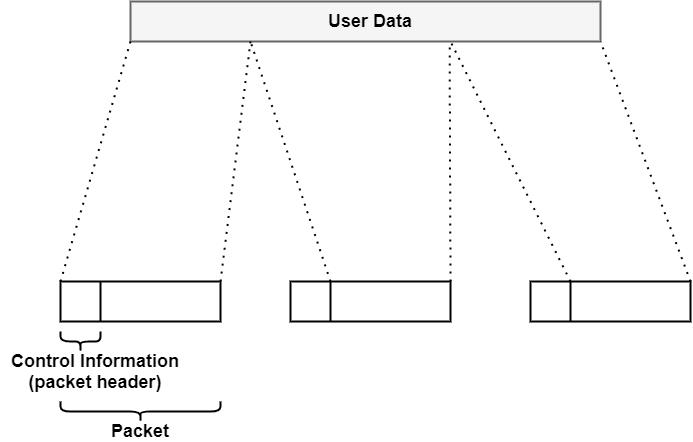
 Data Structure
Data Structure Networking
Networking RDBMS
RDBMS Operating System
Operating System Java
Java MS Excel
MS Excel iOS
iOS HTML
HTML CSS
CSS Android
Android Python
Python C Programming
C Programming C++
C++ C#
C# MongoDB
MongoDB MySQL
MySQL Javascript
Javascript PHP
PHP
- Selected Reading
- UPSC IAS Exams Notes
- Developer's Best Practices
- Questions and Answers
- Effective Resume Writing
- HR Interview Questions
- Computer Glossary
- Who is Who
What is Packet Switching?
Packet switching merges the benefit of the message and circuit switching. Long messages are divided into smaller units known as packets.

A question appears as to how the network will manage this flow of packets as it tries to path them through the network and transfer them to the planned designation. In a packet-switched network, data is transmitted in discrete units of potentially variable length of blocks known as packets.
The maximum length of packets depends on the network. In this, longer size messages are broken into multiple packets. Each packet contains the data with a header. The header includes the control information like priority, source and destination addresses etc.
Methods
There are two methods to Packet Switching, which are as follows −
Datagram Packet Switching
A packet-switching technology in which a packet is called a datagram. It is treated as a separate entity. Each packet includes data about the destination, and the switch helps this data to forward the packet to the right destination. It is also known as connectionless switching.
Virtual Circuit Switching
Virtual Circuit Switching is also referred to as connection-oriented switching. A fixed, consistent direction through the transmitter's network is settled in the virtual circuit method. The packets are transmitted earlier. This direction remains constant for the session period.
Advantages
The advantages of packet switching are as follows −
Storage requirement at intermediate nodes is minimal because the packets are of small and fixed size.
Transmission is high-speed.
This method is quick enough for interactive/real-time software.
Line adaptability is superior.
When traffic becomes heavy, the packet is accepted, but the delivery delay increases.
Disadvantages
The disadvantages of packet switching are as follows −
The packet switching method can suffer from congestion when nodes accept more packets than the outgoing links can transmit.
Processing and control procedures are more complex.
Transmission overhead is increased, because each packet requires an address and control header.

